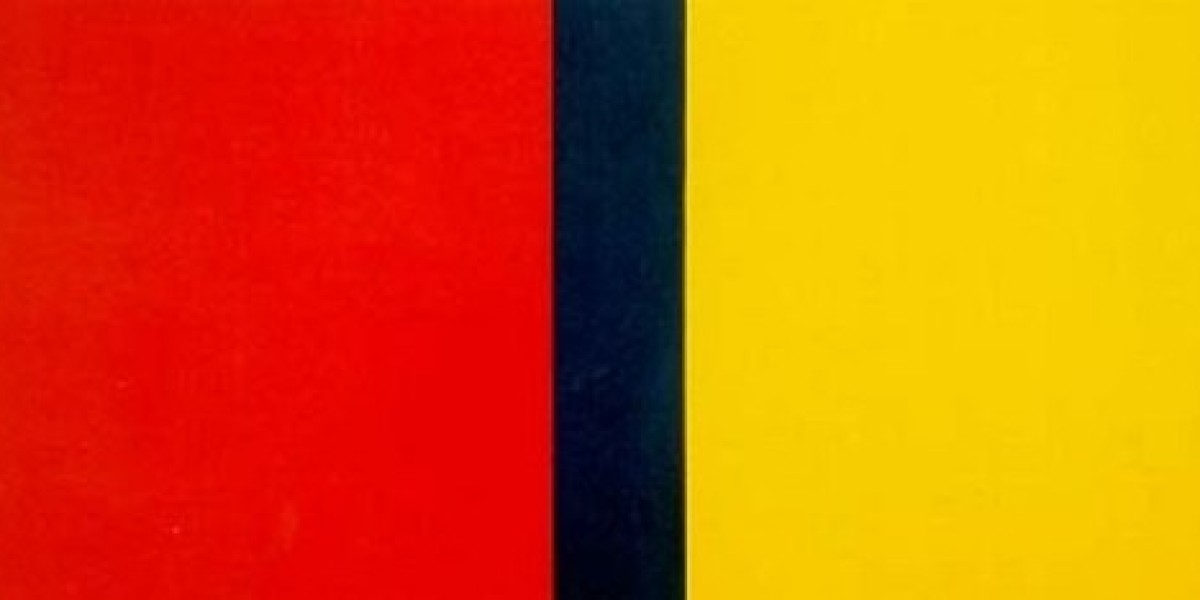One of the key players in the growth of Abstract Expressionism and the advancement of modern art is Barnett Newman (1905–1970). His work profoundly affected the art world and continues to spark conversations about the nature of art and its place in society. It is distinguished by its daring simplicity and investigation of existential topics. Barnett Newman was raised in a culturally diverse milieu that supported his early artistic tendencies. He was born in New York City to Jewish immigrants. Newman first sought a profession in philosophy and education, but his love of painting quickly overcame this. Surrealism and social realism influenced his early works, but he progressively shifted to abstract expressionism, defining his career.
The art world saw a significant transformation in the middle of the 20th century. The dominant movement that highlighted automatic, subconscious, or spontaneous invention was known as abstract expressionism. Despite occasionally being included in this movement, Newman’s art stood out for its unique use of color and abstraction.
Artistic Style and Aesthetics
Barnett Newman’s work is known for its striking emotional effect and uncomplicated manner. His monochromatic, expansive color fields are frequently broken up by vertical lines, or “zips,” in his paintings. The most identifiable feature of Newman’s artwork is these thin zips extending from the top to the bottom of the canvas. They function as a structural component that gives the music a sense of balance and tension. Newman’s use of color is very striking. His canvases frequently have a single, uninterrupted color field that fills the entire space and is peaceful. This method shows his concern for existential issues and the human predicament. To communicate universal truths and elicit a thoughtful, in-depth reaction from the audience, Newman aimed to eliminate unnecessary elements and concentrate only on color and shape.
He used a process that involves layering and combining colors to produce depth and resonance. In contrast to some of his peers, who employed brushstrokes and texture to emote, Newman depended on the accuracy of his zips and the purity of colour to express his creative vision. This technique encouraged viewers to interact with the art on a deeper conceptual level by producing visually arresting but emotionally restrained pieces.
Significance and Impact
Canto VIII/wiki
Barnett Newman has had a significant and diverse impact on the art world. His works significantly influenced the development of abstract art in the 20th century. By challenging accepted notions of composition and representation, Newman expanded the meaning of art. A noteworthy contribution made by Newman was his investigation of the concept of the “sublime” in art. He aimed to inspire amazement and astonishment with his massive canvases and works that have a tremendous presence. This method contrasted sharply with other Abstract Expressionist works’ more personal, intimate expressions. Focusing on universal ideas and transcending personal experiences, Newman’s artwork sought to establish a direct, almost mystical connection between the observer and the piece.
The impact of Newman went beyond the realm of Abstract Expressionist art. His emphasis on form and colour had a long-lasting influence on other art styles, such as colour-field painting and minimalism. Newman’s focus on simplicity and his reduction of things to their most basic forms served as an inspiration for many artists, but especially for minimalists. As artists wrestled with the concepts of space, colour, and viewer involvement, his work also cleared the path for later investigations into conceptual and installation art.
Major Works and Legacy
A few of Newman’s most well-known pieces are “Who’s Afraid of Red, Yellow, and Blue?” and “Vir Heroicus Sublimis” (1950–1951). as well as “Onement I” (1948–1966). One of his most well-known compositions, “Vir Heroicus Sublimis,” is a prime example of Newman’s use of vivid color fields and zips. The painting has a powerful visual effect due to its massive scale and startling simplicity, which aligns with Newman’s intention to evoke a sense of the sublime. “Who’s Afraid of Red, Yellow, and Blue?” is another noteworthy piece that showcases Newman’s investigation of color and its affective significance. The work, composed of three brightly coloured panels, exemplifies his capacity to elicit strong reactions from color.
Newman left behind a legacy of lasting significance and significant influence. His unique approach to abstraction and investigation of existential topics have made his work famous and studied for years to come. Important collections of Newman’s work are held by galleries and museums worldwide, such as the Solomon R. Guggenheim Museum and the Museum of Contemporary Art in New York, guaranteeing his contributions to modern art are valued and conserved.
Biblical Reception and Barnett Newman
The titles of Barnett Newman’s abstract paintings frequently refer to biblical stories. Specifically, Newman often returns to the Genesis myth found in Genesis. Following the devastation caused by the Holocaust, Newman endeavours to retell the story of creation to give the Jewish people (and modernity) in twentieth-century New York a fresh start on the artistic front. A new responsive tradition can be developed, and a thorough mystical recounting of the Genesis account founded in Jewish scriptures can be constructed through a meticulous and nuanced visual investigation of Newman’s Genesis paintings. After the catastrophe, these paintings enable Newman to reconstruct the universe using Hebrew texts, proverbial wisdom, and Kabbalistic mysticism to build a fresh and optimistic vision for the future.
Undoubtedly influenced by the Jewish intellectuals of his day, Newman saw painting as a means of bringing to life the emotional resonance of the historical narrative of the Jewish people and, to use the words of Abraham Joshua Heschel, “building a fortified palace in time.” To start over, in the 1940s, Newman destroyed all of his prior work after realising it did not meet the demands of civilisation and time. Kabbalistic interpretations of the creation story expressly shaped this fresh beginning found in Genesis and occasionally even by attempts to translate and visually annotate the text.
Untitled/wiki
A sequence of paintings created by Newman to represent the “white fire” of the Genesis creation account serves as the culmination of the concepts presented in Black Fire I and White Fire IV. In an ongoing effort to convey the indescribable concepts in the story passed down through Kabbalistic literature—namely, creation as the lowering of a veil of separation between the divine and the world—Newman painted dozens of canvases directly referencing the biblical story. A differentiation that would not matter if it did not materialize inside certain temporal constraints.
‘The meticulously planned 1946 painting Pagan Void (fig. 4) provides a context to understand Newman’s conception of the Genesis account of biblical creation. Still, in the early stages of his interpretive paintings, this image is more illustrative than others but also represents an intensive engagement with Kabbalistic biblical commentary. The painting represents Genesis 1:2, the initiation of creation read in light of Kabbalistic thinking. The painting’s title is derived from tohuvabohu (often translated as unformed and void). As seen in White Fire, “void” for Newman is not expansive emptiness but unmediated unity, a world before applying the TzimTzum. The formless white void of the painting has blue elements of the untamed within it, but these elements have poorly defined edges and bleed into the unified void, reflecting the blue-green waters of the background, which peer through the white paint. The black disk, or black fire, hovers above the white void and green waters. The disk seems to push away the beige-white, soft-blue, and gray into the void, where they are entrapped within the growing red borders. The red then may ultimately contain and cloak the white void. The black disk, a recurring motif in Newman’s paintings, is the first point of the black fire: the artistic articulation of the Kabbalistic wisdom—sefirah “Ḥokhmah'', writes Edward Maza.
Conclusion
Barnett Newman, a key player in the Abstract Expressionist movement, revolutionized modern art with his unique aesthetic and insightful philosophical perspective. His work emphasized the viewer’s spiritual and emotional experience while challenging conventional ideas of form and content. It is distinguished by vibrant hues and the recognisable “zip” lines. The sublime is a subject that runs deep through Newman’s examination of the human condition and the search for purpose in an uncertain world.
Beyond his artistic accomplishments, Newman made significant contributions to art history through his writings and theories, which offered a framework for comprehending the abstract and metaphysical in art. His emphasis on the significance of the viewer’s subjective experience and the artist’s aim stretched the limits of modern aesthetics and created new opportunities for artistic expression. By eliminating all unnecessary elements and emphasizing pure color and shape, Newman encouraged viewers to interact directly and intimately with his paintings, pushing them to confront life’s fundamental forces.
For More Visit On: https://abirpothi.com/








